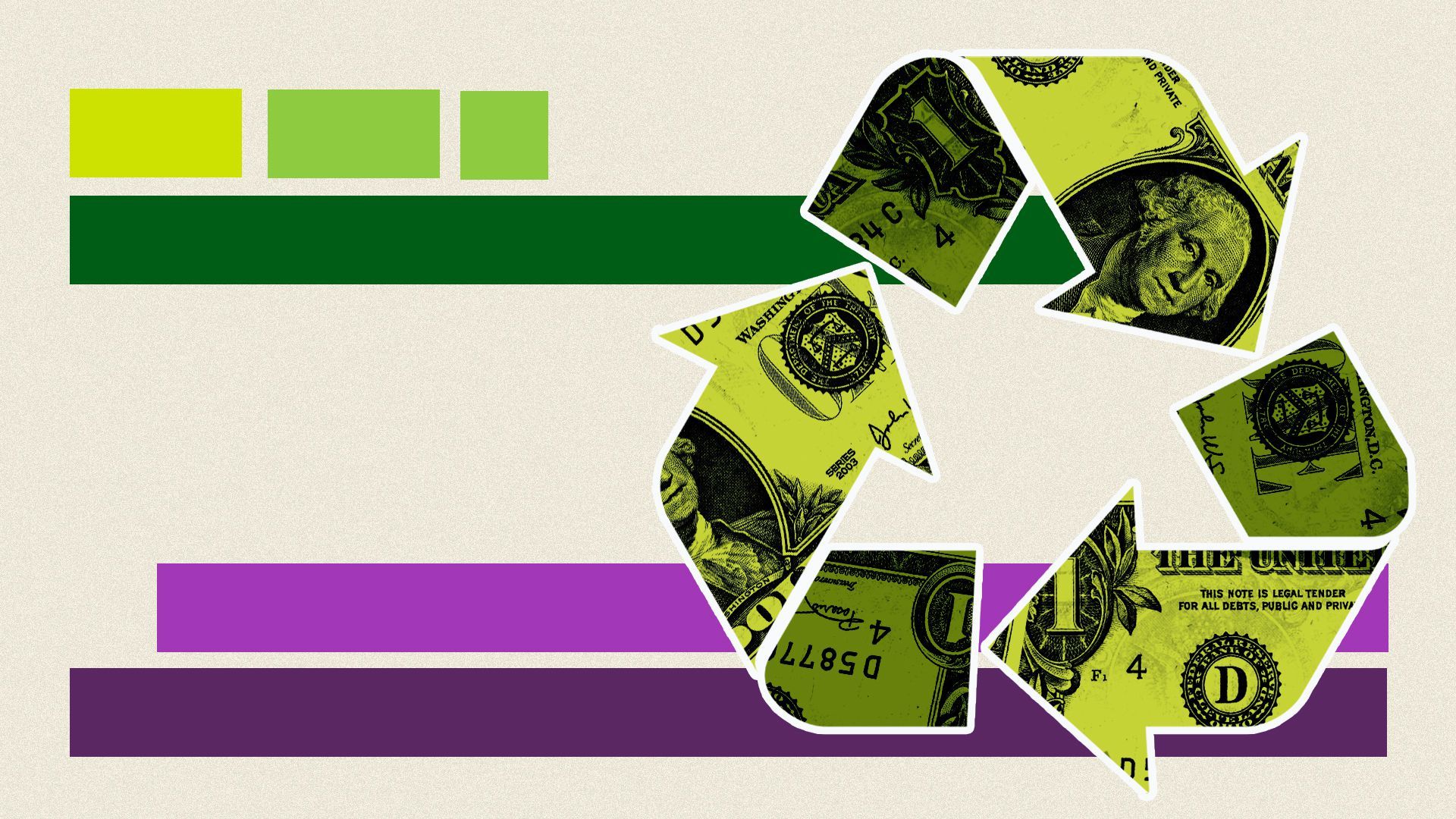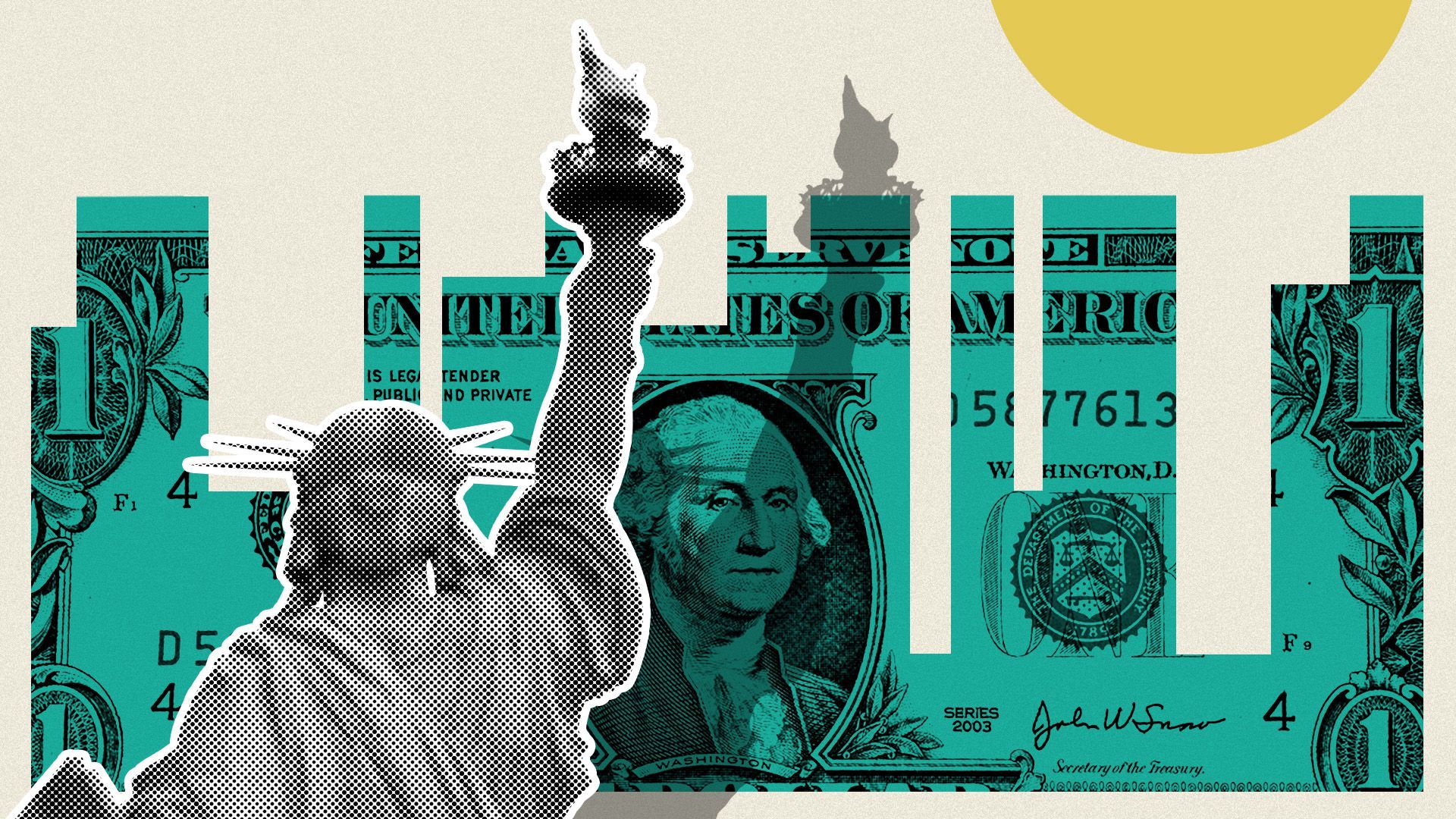| Iron Man — err, actor Robert Downey Jr., who's an investor in climate-related startups — stirred up debate this week when he tweeted that "the technologies that suck carbon out of the air and capture it are JUST AS IMPORTANT to stop global warming as building new renewable energy." Why it matters: To climate tech investors (and scientists), the topic is more nuanced, with the debate focused on the optimal scale and prioritization of carbon removal and capture as a tool to fight climate change. The big picture: Venture capital and other investments in climate tech and energy companies have skyrocketed over the past few years. - Between the second half of 2020 and the first half of 2021, venture capital and private equity investors poured $87.5 billion into climate tech, with more than $60 billion invested in the first half of 2021, per PwC. That's a 210% increase from the 12 months prior.
- Fourteen cents of every venture capital dollar is now invested into climate tech, PwC notes.
- Within that broader category, backers invested more than $250 million in greenhouse gas capture, removal and storage in the first half of 2021 — double that of the prior six months, and often generating more headlines than other types of tech.
What they're saying: "I think there's definitely a little bit of irrational exuberance around [carbon dioxide removal]," Congruent Ventures managing partner Josh Posamentier tells Axios. - It's easy for investors pondering the challenge of greenhouse gas emissions to think, "Oh that's just a perfect solution — we'll just take it out of the air!" he adds.
Screenshot: @AndrewDessler/Twitter Between the lines: To many climate scientists, it's imperative that we cut emissions sooner to avoid staking the future on risky technology bets to remove carbon later. - The most recent United Nations climate report warned that we are past the point where "minor, marginal, reactive or incremental changes" will adequately prepare society for the climate impacts, as Axios' Andrew Freedman reported.
- That means curbing global warming will require a faster shift to clean energy sources like renewables, efficiency tech, electric vehicles, and others. Carbon removal can be a complement to vastly expanding clean energy tech, but not a substitute for it.
- Some critics also characterize corporations' frequent purchases of carbon offsets (such as forest planting and preservation) as an effort to appear climate-conscious rather than actually making fundamental changes to their operations and emissions. And that's on top of the ongoing integrity and verification concerns in the carbon credit markets.
Yes, but: Carbon removal and capture will still be one of the necessary tools in the fight against climate change. - "Every aspect of climate tech needs more funding. While we need to reduce emissions to zero... we simultaneously need to remove the trillions of tons of CO2 that are already in the atmosphere," says Lowercarbon Capital partner Ryan Orbuch, who previously spearheaded Stripe's carbon removal procurement program.
- "In that light, funding for carbon removal has to grow quickly — and to date, it's way behind relative to the market opportunity."
Congruent Ventures' Posamentier adds that the area of carbon capture that interests him is tech that turns the carbon into something useful like polymers or alternative fuels, or permanently sequesters it. It's that second step after removing the carbon that he says makes a company a viable solution to managing our emissions. The bottom line: While not all investors are equally optimistic about individual technologies and companies' efforts to curbing climate change, there is a consensus that the fight requires a multi-pronged approach. | 









No comments:
Post a Comment